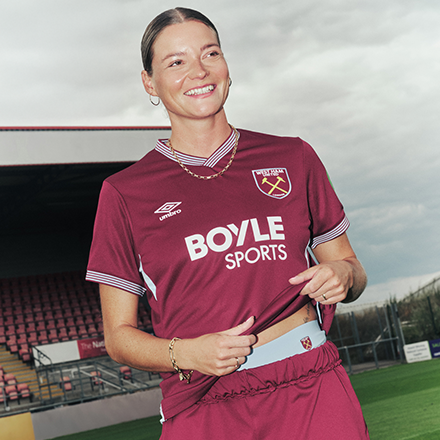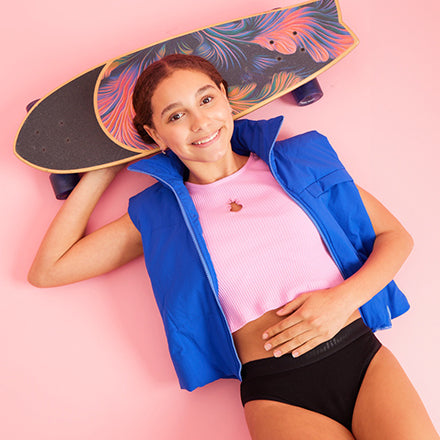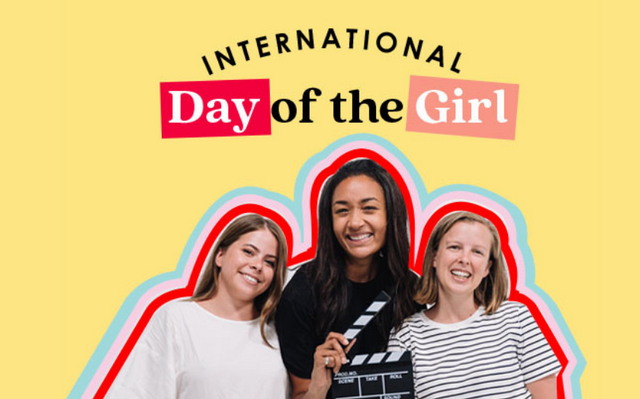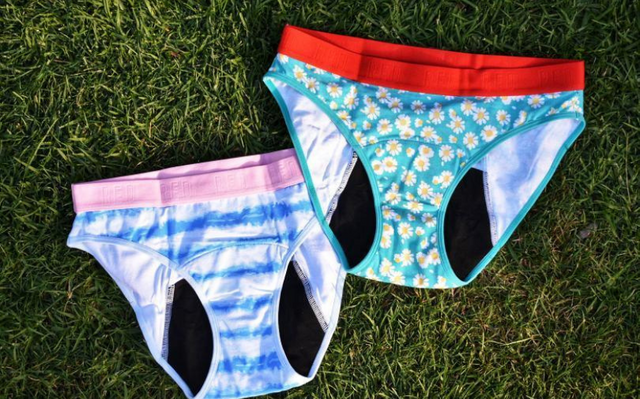When it comes to exercising on your period, there’s a lot of information out there. There’s also a lot of questions. Like... what happens during ovulation? Is too much exercise bad for you? When’s the best time to hit a PB? This month, we wanted to help you get moving and go with your flow.
So to celebrate the launch of our new active range with Puma we sat down with Women’s Health Nurse Georgia Avery to get the low-down on periods, exercise and everything in between.
Is exercise beneficial for period health? Can exercise relieve cramps/PMS?
Period health is both physical and mental. Physically, there is evidence that exercise can alleviate cramping during your period. This does not have to be physically arduous and may be as simple as going for a walk or doing a light stretch if experiencing cramping. It is suggested this might be from the increased blood flow during exercise. There is also anecdotal evidence that exercising on your period may result in a slightly lighter period, however there is little explanation as to why this occurs. Importantly, exercising increases endorphins, which can reduce the impact of the anxiety and depression symptoms experienced during PMS. Overall, every woman will have a slightly different mensural cycles, with their own variations in hormone levels and symptoms experienced. It is is important to listen to your body and mind when deciding to exercise during your period.
Can athletes have their periods affected due to too much exercise? Is this bad?
Athletic amenorrhoea is the absence of menstrual periods. This can be caused from extremely low levels of body fat, high levels of exercise hormones (beta endorphins and catecholamines), stress and eating habits. Athletic amenorrhoea can occur in child athletes, who perform at an elite level during puberty and therefore may not have their first period until much later in their teens when they wean off sport. Alternatively, it can occur in adults who conduct significant lifestyle changes later in life in regard to their physical output and the type/amount of food they eat. Amenorrhea is considered a risk to women’s health because it may impact bone density, risking osteoporosis, as well as cause cardiovascular complications and impact fertility. It is highly recommended to seek medical advice if you have missed more than three periods in a row to ascertain if you may be experiencing amenorrhea.
Are there different phases of your menstrual cycle that might impact your exercise routine? EG feeling tired in some phases
There are two distinct phases of a menstrual cycle: the follicular phase (days 1-14) and the luteal phase (days 15-28), with ovulation occurring in between around days 12 - 19 of your cycle. The follicular phase is overall lower in hormones than the luteal phase, although the type of hormones are important to understand. The follicular phase encompasses your period and the luteal phase encompasses the pre-menstrual period. Generally, the luteal phase is associated with lower energy levels due to increased amounts of the hormone progesterone. High levels of progesterone increase overall body temperature and cause small changes in cardiovascular strain, with women experiencing slightly higher heart rates during this phase. It also means you feel a bit warmer quicker and may sweat more than you normally would exercising. This doesn’t mean you shouldn’t exercise in the second half of your cycle, it may just explain why your energy levels and motivation drop off a bit. It is also worth noting that this phase encompasses PMS, meaning your mental capacity may differ from your baseline and you might feel a bit off! This might be a good time to incorporate in lower intensity exercise such as yoga, pilates, long walks and swimming.
Can people use their cycle to take advantage of their workouts? Eg feeling stronger in the ovulation phase? What is the best time to do what exercise on your period and why?
Due to lower progesterone levels and higher oestrogen levels, the most energy available during your mensural cycle is typically in the follicular phase, peaking when ovulation occurs. Your heart rate and body temperature sit slightly lower in this phase, supporting higher energy output for exercise. Therefore contrary to popular belief - if you are feeling healthy and well during your period, you are likely to still match your normal exercise output during this phase. Although this may not be the priority for many, it is good news for elite athletes who may not be able to avoid competitions that fall on their period date. Therefore either during your period or afterward leading into ovulation is the time best aligned to higher intensity workouts, such as running, HIIT training and strength training.
What kind of support should I seek if I experience pain/incontinence during exercise? E.g. pelvic physio. How to manage bladder leakage during exercise?
Pain experienced during exercise whilst on your period is mostly likely attributed to cramping. You may be able to alleviate this through lowering the intensity of your workout or utilising anti-inflammatories such as Ibuprofen prior to exercising. However, there are also a number of other gynaecoloological conditions such as endometriosis and PCOS that may be the underlying cause of your pain. Importantly, if you experience any pelvic pain or unusual discomfort whilst exercising, when you are not on your period, you should seek medical advice.
Urinary incontinence during exercise is not unusual, with estimates suggest 1 in 5 women experience some form of bladder leakage during workouts. There are a number of physiotherapy options for strengthening pelvic floor, glutes and core muscles to address this. There are also medical devices, procedures and medication options that can be discussed with a medical professional.
A revolution in period activewear.
The PUMA x Modibodi range is ground-breaking period activewear that combines our patent pending Activewear Technology with world-class expertise from global sports brand, PUMA.
Get your hands on two new styles – the Recycled Active Short and the 7/8 Recycled Active Leggings, in classic black or chic aubergine colour. Both styles are Moderate-Heavy absorbency, and can hold 2-3 tampons. Made to make girls, women and people with periods feel comfortable in movement.
Citations:
Findlay RJ, Macrae EHR, Whyte IY, et al. How the menstrual cycle and menstruation affect sporting performance: experiences and perceptions of elite female rugby players. British Journal of Sports Medicine 2020;54:1108-1113.
Zainuddin P and Carter E. Exercise for period pain: New evidence to support exercising to reduce painful cramping. Evidently Cochrane blog, 07 May 2020. Retrieved from: https://www.evidentlycochrane.net/exercise-for-period-pain






